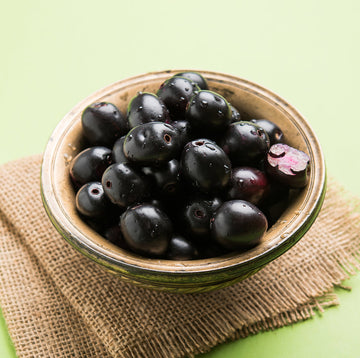Bitter Melon and Blood Sugar Control: A Natural Antidiabetic Agent

Bitter melon (Momordica charantia), also known as bitter gourd, is a widely used medicinal plant in traditional medicine, particularly in Asian and African cultures. It has gained attention for its potent antidiabetic properties, making it a natural alternative for managing blood sugar levels. This article explores the science behind bitter melon’s role in blood sugar control and its potential benefits for individuals with diabetes.
How Bitter Melon Affects Blood Sugar Levels
Bitter melon contains bioactive compounds that help regulate glucose metabolism and insulin function. The key mechanisms through which it exerts its antidiabetic effects include:
-
Enhancing Insulin Secretion – Bitter melon stimulates the pancreas to produce more insulin, thereby helping lower blood sugar levels.
-
Improving Insulin Sensitivity – Compounds in bitter melon improve the body's ability to use insulin effectively, reducing insulin resistance.
-
Reducing Glucose Absorption – It slows down carbohydrate digestion and absorption in the intestines, leading to lower post-meal blood sugar spikes.
-
Mimicking Insulin – Certain compounds in bitter melon act like insulin, directly lowering blood sugar levels.
Active Compounds in Bitter Melon
Bitter melon is rich in various bioactive compounds responsible for its antidiabetic effects, including:
-
Charantin – Known for its blood glucose-lowering effects.
-
Polypeptide-p (Plant Insulin) – A compound that mimics insulin and helps regulate glucose levels.
-
Vicine and Lectins – Contribute to reduced blood sugar concentrations.
Scientific Evidence Supporting Bitter Melon’s Antidiabetic Properties
Numerous studies have investigated the effects of bitter melon on blood sugar control:
-
A study published in the Journal of Ethnopharmacology found that bitter melon extract significantly lowered fasting blood glucose levels in individuals with type 2 diabetes.
-
Research in Phytomedicine showed that bitter melon improved glucose tolerance and reduced hemoglobin A1c (HbA1c) levels, a key marker for long-term blood sugar control.
-
Animal studies suggest that bitter melon extract can regenerate pancreatic beta cells, which are responsible for insulin production.
How to Use Bitter Melon for Diabetes Management
Bitter melon can be consumed in various forms to help manage blood sugar levels:
-
Raw or Cooked Vegetable – Added to stir-fries, soups, or salads.
-
Juice – Fresh bitter melon juice is a popular traditional remedy for diabetes.
-
Powder or Capsules – Bitter melon supplements are available for convenience.
-
Tea – Bitter melon tea is another effective way to consume its active compounds.
Precautions and Potential Side Effects
While bitter melon is generally safe, excessive consumption may lead to:
-
Hypoglycemia (extremely low blood sugar levels)
-
Gastrointestinal issues like diarrhea or stomach pain
-
Interactions with diabetes medications
Individuals taking insulin or other diabetes medications should consult a healthcare provider before incorporating bitter melon into their routine.
Conclusion
Bitter melon is a powerful natural antidiabetic agent with promising benefits for blood sugar control. Its ability to enhance insulin function, reduce glucose absorption, and lower blood sugar levels makes it a valuable supplement for individuals managing diabetes. However, it should be used cautiously, preferably under medical supervision, to avoid potential interactions with diabetes medications.
By integrating bitter melon into a healthy diet and lifestyle, individuals can take advantage of its medicinal properties while maintaining balanced blood sugar levels naturally.





